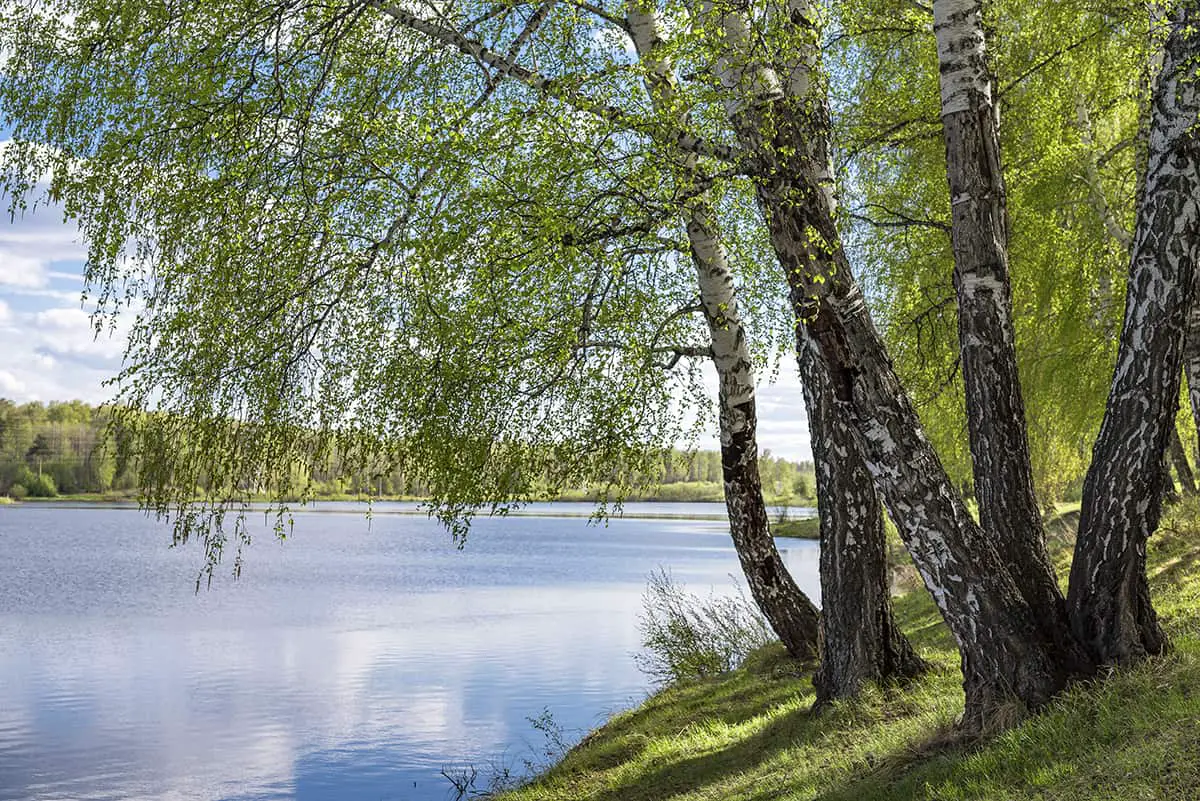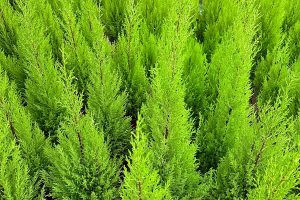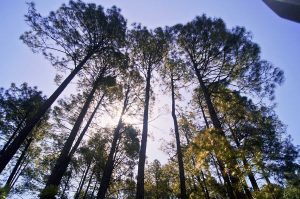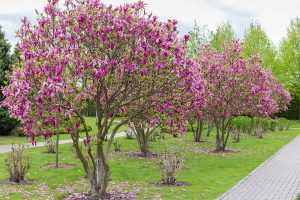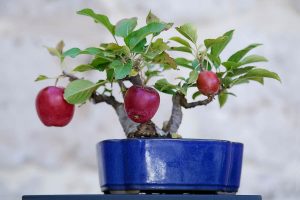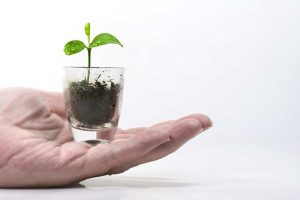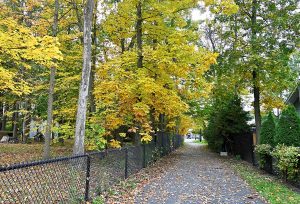Birch trees belong to the Betula genus, which is in the Betulaceae family. This is commonly known as the Birch family or the Alder family because it also comprises alder trees and hazel trees.
Birch trees are known for their striking fall foliage, and their varying colors of bark, which will often peel for added interest in the winter landscape. Though birch trees are predominantly cool-weather trees, there are some species which can thrive in warmer climates. Within the Betula genus, there are also birch species which thrive in wet soils, and those which can also tolerate drought.
Here we explore the best types of birch trees for a range of growing conditions.
Table of Contents
Yellow Birch
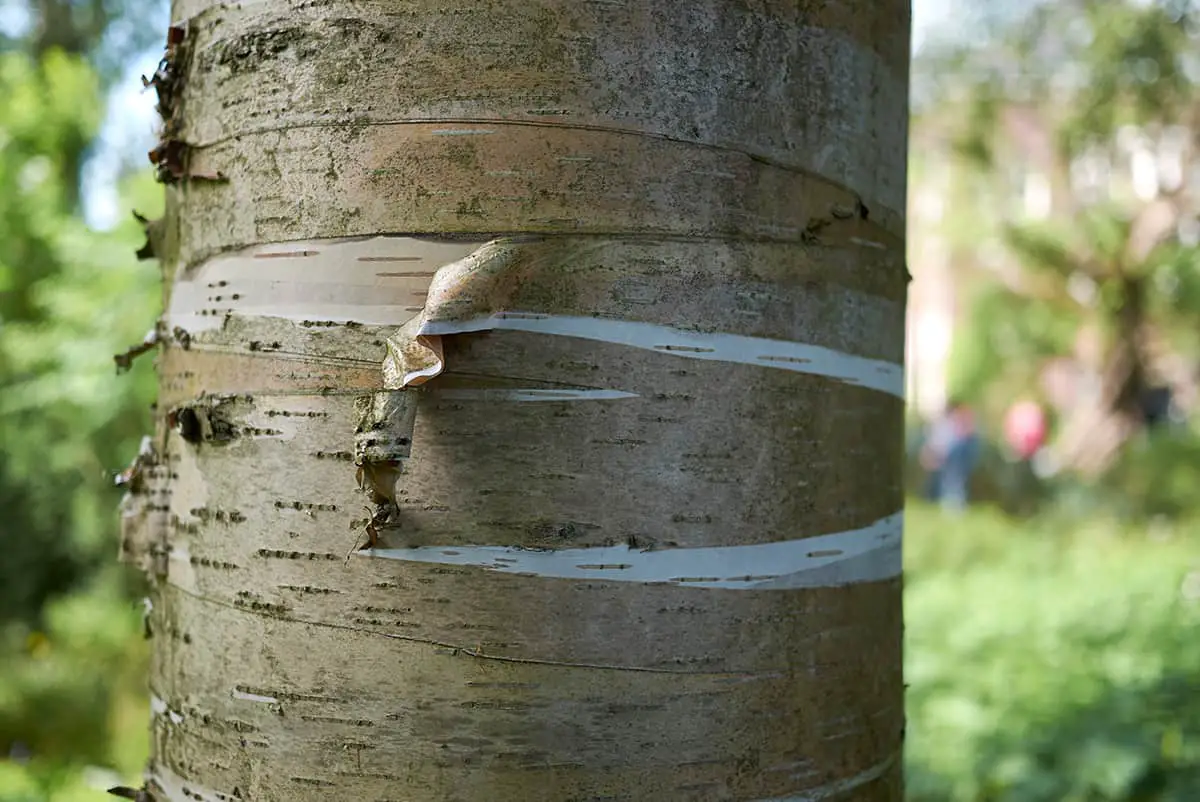
- Botanical name: Betula alleghaniensis
- Common names: Yellow Birch, Swamp Birch, Gray Birch, Golden Birch
- Plant family: Betulaceae
- USDA hardiness zone: 2 – 7
- Mature height: 80 feet
- Mature spread: 80 feet
Yellow Birch is native to the northeastern United States and parts of eastern Canada. The common names of ‘Yellow Birch’ and ‘Golden Birch’ are a reference to the color of the tree’s bark, which is smooth and glossy, in a golden shade of brown which appears to almost shimmer in the light. Like most types of birch, the Yellow Birch has exfoliating bark.
On younger specimens, the golden bark peels away in thin, papery ribbons, while on more mature trees the bark will shred in larger, chunkier fragments. This is a deciduous tree which sheds its leaves in fall, however, it is known for providing interest in the landscape through every season thanks to its unusual bark. The tree is medium to large in size, usually topping out at between 60 and 80 feet in height, though it has been known to exceed 100 feet in some conditions.
The leaves of the Yellow Birch are dark green through spring and summer, and oval shaped with a point at the end. In fall, they turn to a brilliantly bold shade of yellow before dropping to the ground. The flowers of the Yellow Birch are held in catkins and appear on bare branches in early spring. They are quite small and often go unnoticed by humans, but are popular with pollinators.
Yellow Birch is extremely commercially important in North America as a source of lumber. It is the most important source of hardwood in eastern Canada, and the majority of wood sold for any purpose across North America comes from this tree. Yellow Birch is commonly used for flooring, cabinetry, veneer, furniture, and construction. The tree can also be utilized for its sap, which is similar to that which is tapped from the Sugar Maple tree (Acer saccharum) to make maple syrup.
Yellow Birch grows well in full sun or partial shade and can withstand a range of soil types. Well-draining soil which is kept moist will be best, but this tree can also tolerate wet or waterlogged soils, hence another common name for it of ‘Swamp Birch’.
Erman’s Birch
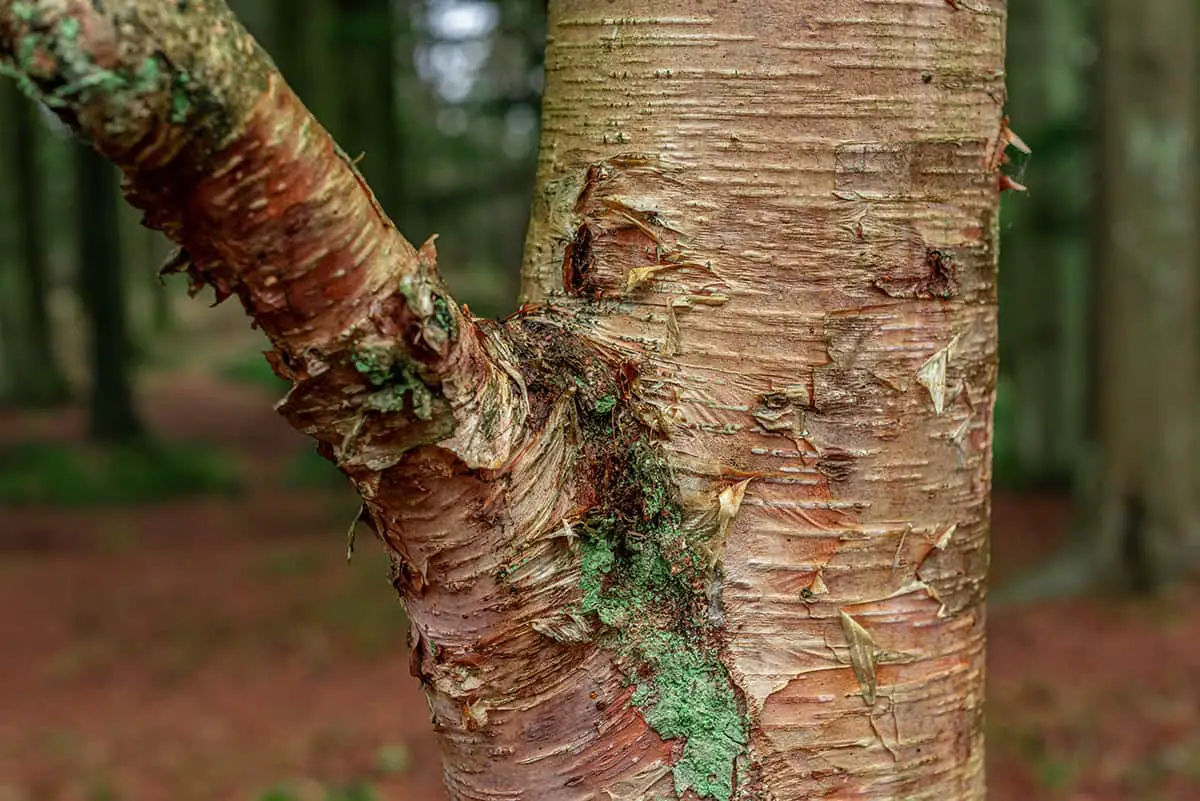
- Botanical name: Betula ermanii
- Common names: Erman’s Birch, Gold Birch, Russian Rock Birch,
- Plant family: Betulaceae
- USDA hardiness zone: 5 – 8
- Mature height: 60 feet
- Mature spread: 30 feet
Erman’s Birch is native to eastern Russia, Japan, Korea, and China. It is a deciduous species, which retains interest through every season thanks to its lush leaves through summer, color-changing foliage in fall, and peeling bark through winter and into spring. The flowers of Erman’s Birch emerge before the arrival of the foliage in early spring, appearing on bare branches in small catkins.
The leaves of this tree are heart-shaped and have finely serrated margins. They are bright green through winter, developing to a golden yellow in fall and shedding from the tree. The bark of Erman’s Birch can vary in color from one specimen to another, taking on shades of creamy brown, coral, blush pink, or yellow-tinged copper. The bark is fine and papery and sheds in flakes or shaggy ribbons.
Erman’s Birch can be grown in full sun or partial shade and tolerates a wide range of soil types. It will thrive in moist or wet soils.
Sweet Birch
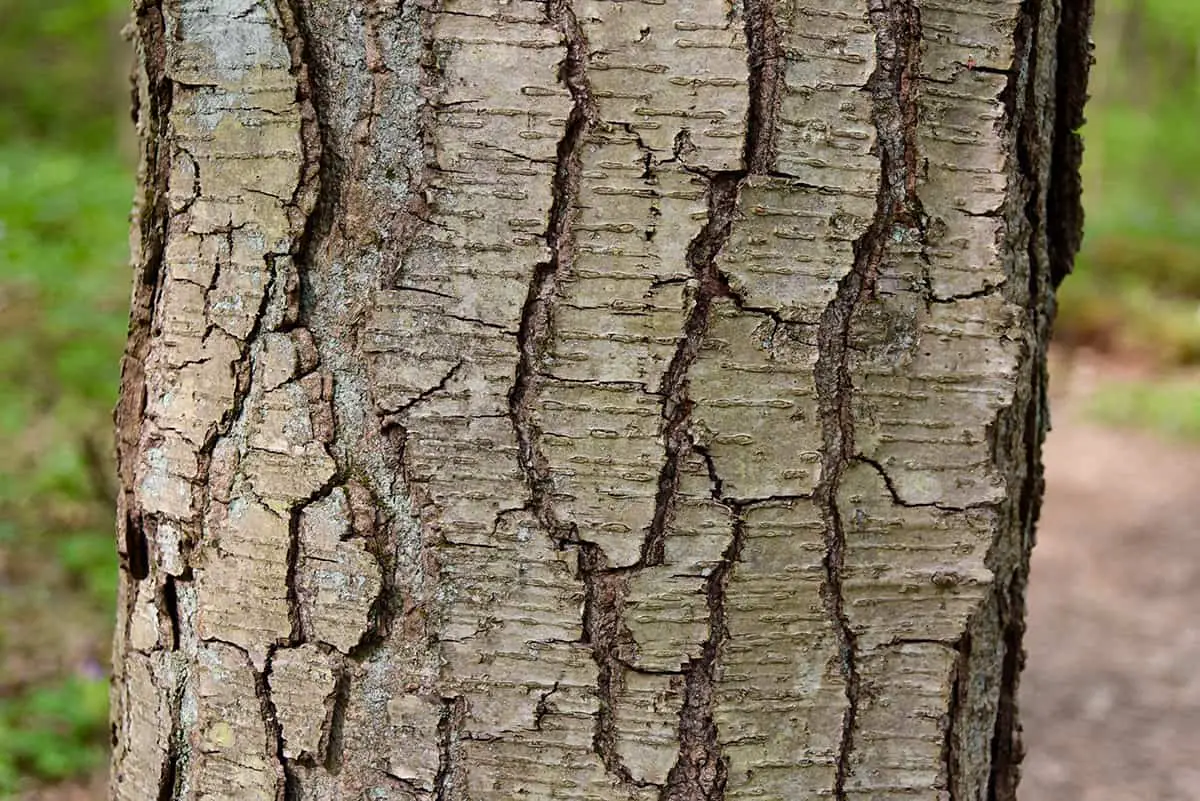
- Botanical name: Betula lenta
- Common names: Sweet Birch, Spice Birch, Cherry Birch, Mahogany Birch, Black Birch
- Plant family: Betulaceae
- USDA hardiness zone: 3 – 7
- Mature height: 50 feet
- Mature spread: 50 feet
The Sweet Birch is a deciduous tree native to eastern North America. It is typically medium in size, topping out at around 50 feet, though in exceptional cases it can exceed 100 feet in height. The slender trunk is covered in smooth, red-brown bark which retains interest throughout the year, developing a scaly texture as the tree matures.
Unlike many types of birch, the Sweet Birch does not regularly shed its bark, but it will go through a very occasional period of exfoliation. The first peeling of bark will occur at around 70 to 80 years of age, and the new layer of bark which replaces this will peel at around 150 years of age.
The flowers appear in catkins in early spring before the arrival of the leaves, and these develop into delicately crumbling, drooping catkins which remain on the tree through winter. The foliage of the tree emerges in a light shade of green in mid to late spring and takes on a deeper green color through the summer. By fall, the leaves turn a shade of coppery yellow before falling from the tree.
Sweet Birch trees fare best in cooler climates and thrive in full sun or partial shade. They are tolerant of salt, and can survive in a wide range of soil types, though good drainage is ideal. In terms of moisture, a moderate moisture will be best for the Sweet Birch, but it can also survive in periods of drought, as well as in wet soils.
River Birch
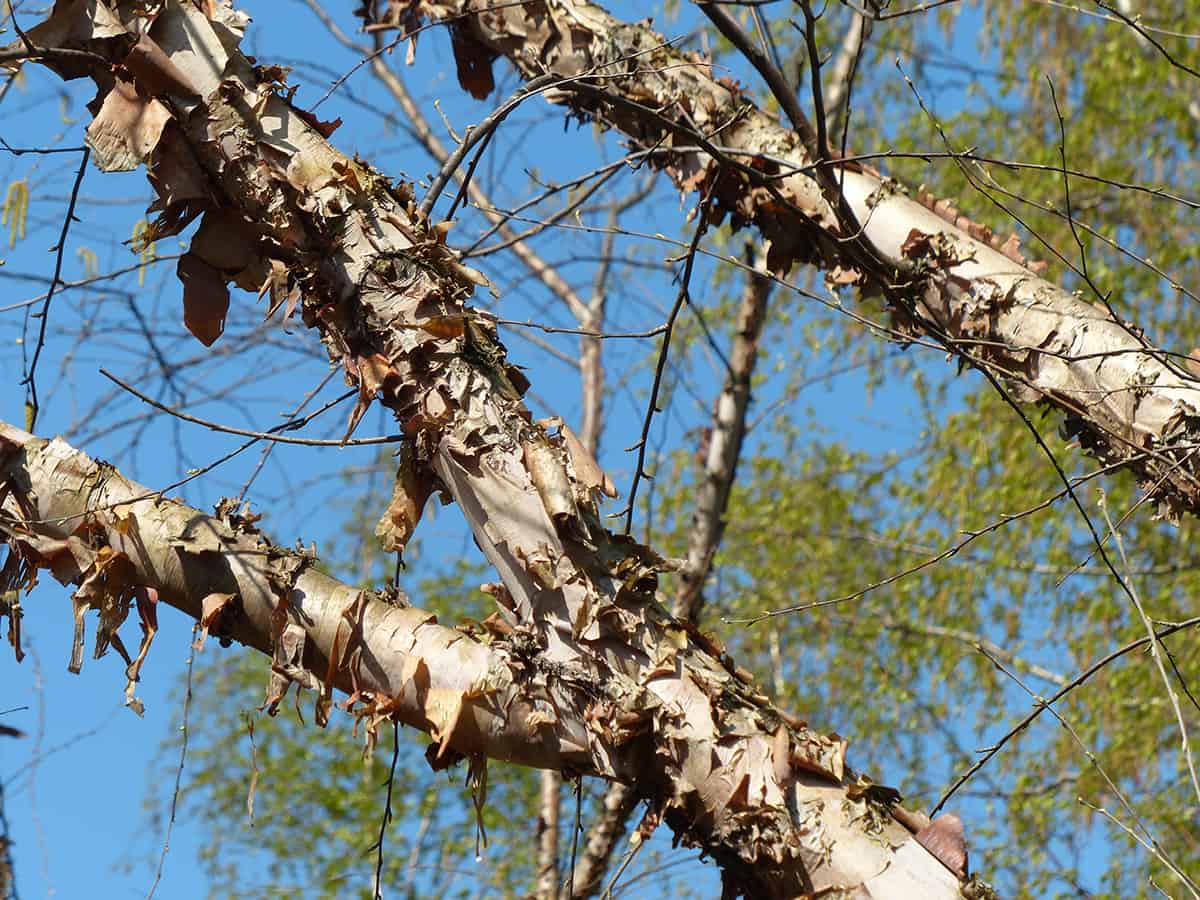
- Botanical name: Betula nigra
- Common names: River Birch, Water Birch, Black Birch
- Plant family: Betulaceae
- USDA hardiness zone: 4 – 9
- Mature height: 60 – 80 feet
- Mature spread: 40 – 60 feet
The River Birch is native to the eastern United States, and is known for being one of the more heat tolerant types of birch. Most species of birch fare best in cooler climates, though the River Birch can thrive in USDA hardiness zones as high as 9.
This is a deciduous tree which can grow to 100 feet in height but more typically reaches between 60 and 80 feet at maturity. River Birch trees are favored for their attractive and unusual bark, which covers the tree in glistening creamy-pink, and then sheds in strips or sheets, taking on colors which range from burnt orange through to black. The canopy of the tree is pyramid shaped, and the foliage is unusually angular in diamond shapes. Leaves are green and glossy on the upper surface, and silver-gray beneath.
River Birch is important as a source of food and shelter for wildlife, though it has little commercial value. It grows predominantly along streams, riverbanks, and floodplains, and is therefore tolerant of wet, swampy conditions. It is very tolerant of acidic soils, which is rare amongst hardwood trees, so it is useful for growing in acid conditions where other plants may not thrive.
Silver Birch trees can also be put to good use in areas where soil erosion is a problem. They are widely cultivated as specimen and landscape plants for their appealing bark.
River Birch trees should be grown in full sun or part shade, and are very adaptable in terms of both soil conditions and climate conditions. They will tolerate heat well, and also perform admirably in cooler temperatures.
In hot summers, aim to keep the roots cool with a layer of mulch over the soil. River Birch trees can be grown in standing water or semi-aquatic conditions, but prefer soils which are kept moderately moist.
Paper Birch
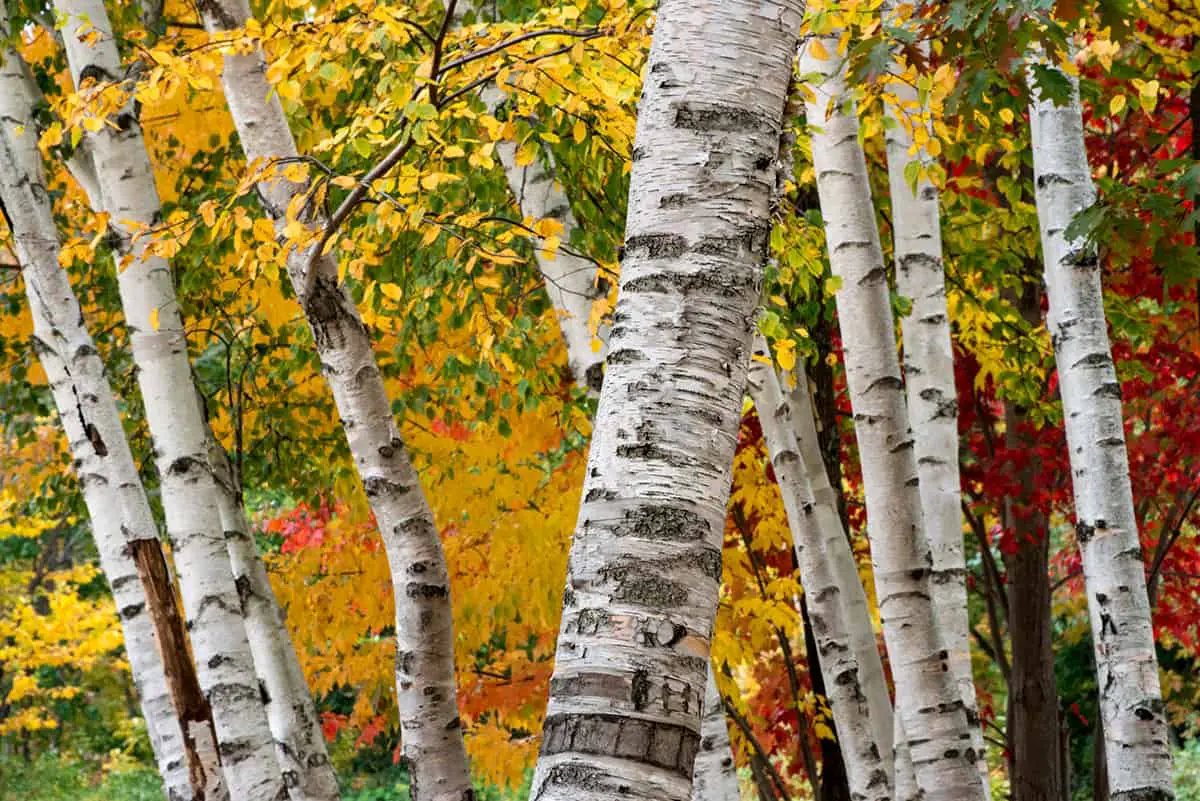
- Botanical name: Betula papyrifera
- Common names: Paper Birch, White Birch, Canoe Birch, American White Birch
- Plant family: Betulaceae
- USDA hardiness zone: 2 – 7
- Mature height: 50 – 70 feet
- Mature spread: 25 – 50 feet
Paper Birch is a deciduous, fast-growing tree which is native to the northern areas of North America. It is named after the peeling bark which is shed in paper-like strips and ribbons, and this was used in ancient times as a surface for communicating messages. The outer bark of the tree is white, and as it peels away it reveals coppery orange-colored bark beneath.
As the tree ages, black markings appear on the white bark in irregular patches. The foliage of the Paper Birch is dark green through summer and fades to a golden yellow in the fall, then sheds to reveal the bare branches of the tree.
Paper Birch trees are very hardy, and perform best in cooler climates where the ground freezes in winter. They are extremely popular as a landscape tree in New England, favored for their interesting bark and striking fall foliage, and in fact the Paper Birch is the state tree of New Hampshire. These trees will struggle in high temperatures and in high humidity. They should be grown in full sun or partial shade, and can adapt to a wide range of soil types as long as they are kept consistently moist.
Silver Birch
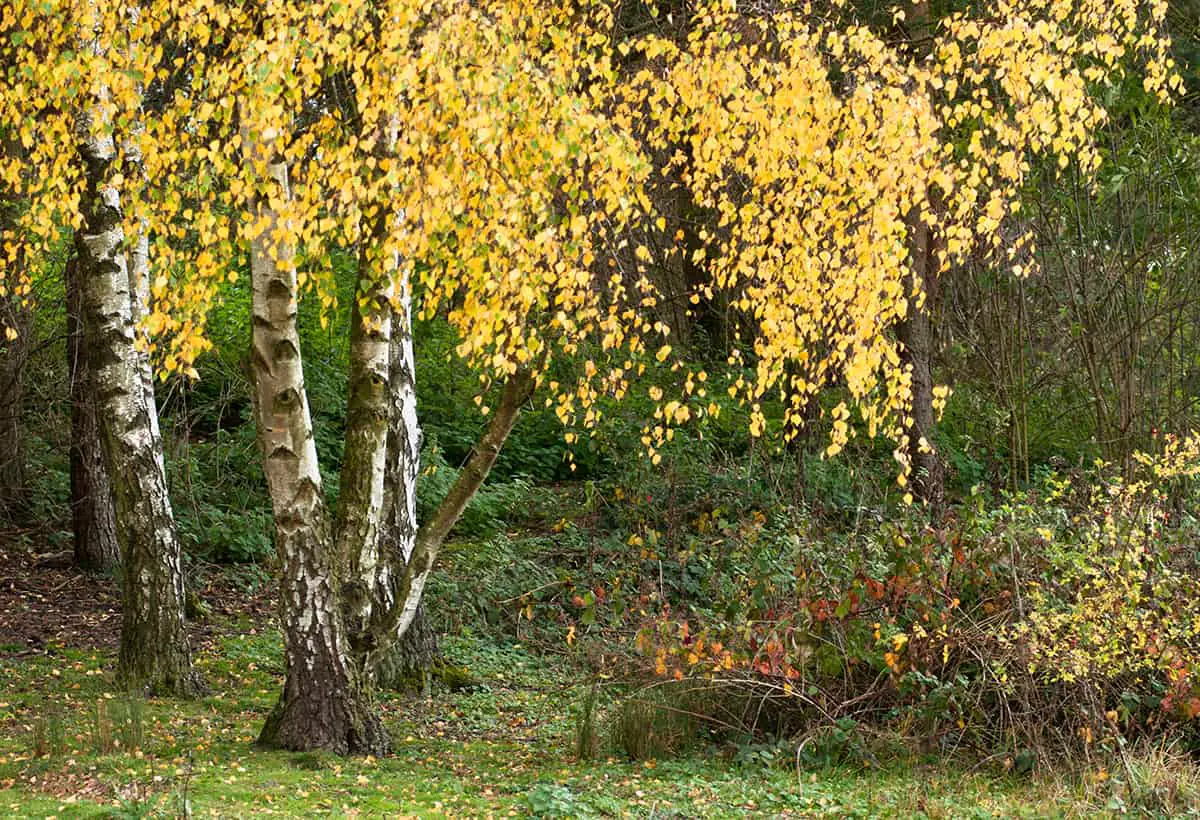
- Botanical name: Betula pendula
- Common names: Silver Birch, Weeping Birch, Warty Birch, European White Birch
- Plant family: Betulaceae
- USDA hardiness zone: 2 – 7
- Mature height: 30 – 50 feet
- Mature spread: 15 – 30 feet
The Silver Birch tree is native to Asia and Europe. It is a deciduous species with gracefully drooping branches which sway in the breeze. The bark of the Silver Birch is copper or golden bronze on younger trees but develops to a silvery cream color with black markings on more mature specimens. Amongst younger Silver Birch trees, the bark is smooth and glossy, and this will take on a more rugged texture as the tree gets older. Leaves are ovate, and glossy green through summer, becoming golden yellow in fall before shedding.
This is a cold-climate tree which struggles in hot temperatures, but it is quite adaptable in terms of soil. It prefers moderately moist soils, however, it can also survive periods of drought, as well as periods of waterlogged conditions.
Himalayan Birch
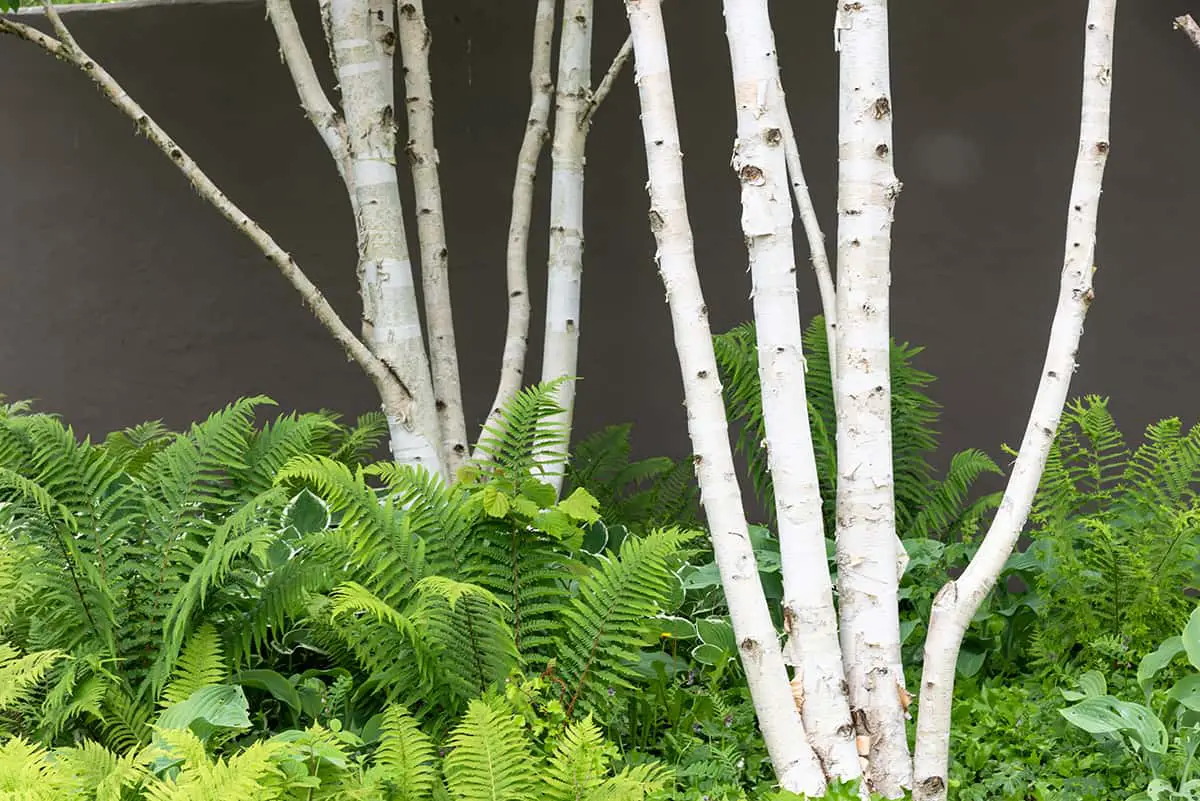
- Botanical name: Betula utilis
- Common names: Himalayan Birch, Red-Barked Birch
- Plant family: Betulaceae
- USDA hardiness zone: 3 – 8
- Mature height: 40 -70 feet
- Mature spread: 20 – 25 feet
This tree gets its common name from its native region, which is the western portion of the Himalayas. It features striking copper-red bark, which peels away from the tree in paper-like sheets, to reveal creamy-salmon-colored bark underneath. Both the trunk and branches of the tree shed their bark, creating a compelling visual treat through winter when the leaves have dropped. The foliage of the Himalayan Birch is deep green through summer, becoming a rich shade of yellow in the fall.
Himalayan Birch trees tolerate a broad spectrum of soil types, provided the ground is kept moist or wet. They can be grown in full sun or partial shade.
Japanese White Birch
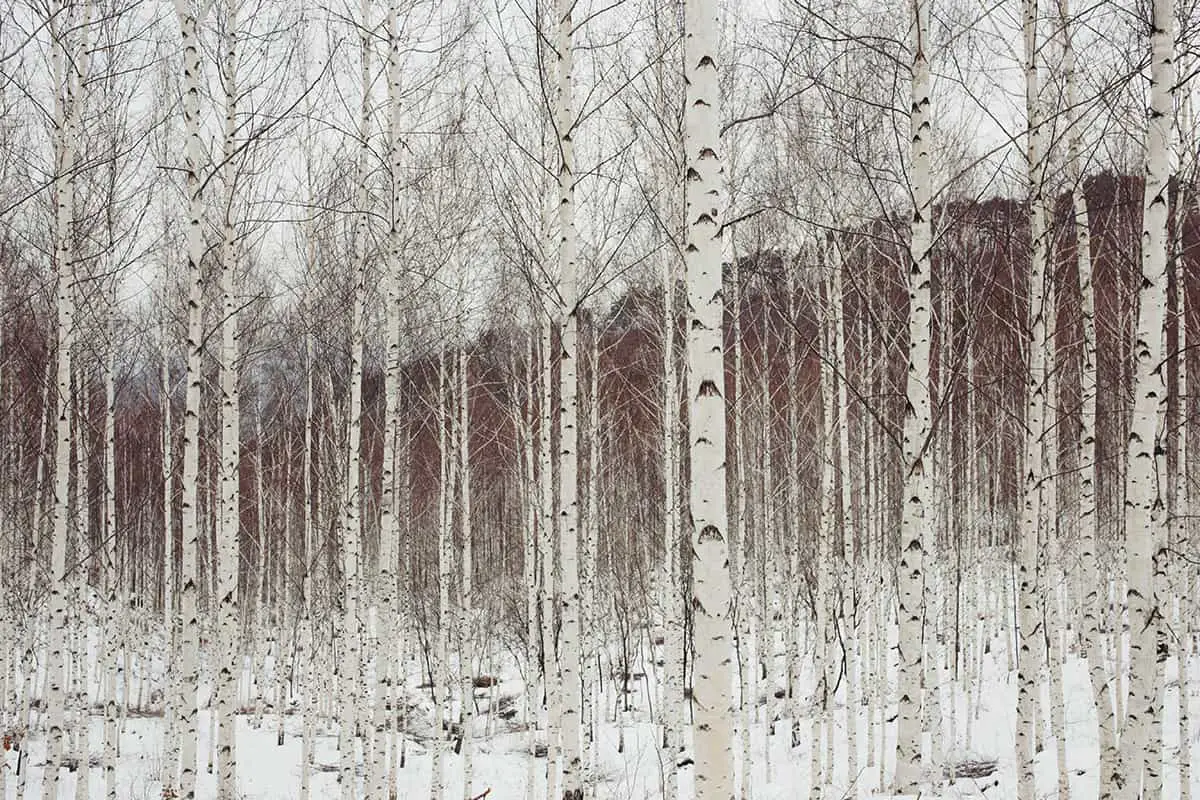
- Botanical name: Betula platyphylla
- Common names: Japanese White Birch, Asian White Birch
- Plant family: Betulaceae
- USDA hardiness zone: 4 – 70
- Mature height: 30 – 40 feet
- Mature spread: 15 – 25 feet
This tree is native to Asia, where it can grow to heights of 100 feet but more commonly does not exceed 40 feet. It is a deciduous species which produces lime-green foliage in spring and becomes bright yellow in the fall. Japanese White Birch trees have a slender trunk and an elegant habit, with a pyramid shaped crown. The bark of the tree is a bright shade of white, and this is where the common name of the Japanese White Birch comes from.
This is a low-maintenance tree that grows easily in a wide range of soil types. It prefers moderately moist to wet conditions, but it can also survive in periods of drought. The Japanese White Birch should be grown in full sun to partial shade.
